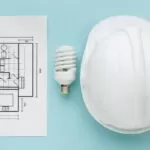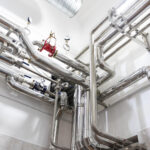In the vast and dynamic landscape of Texas, building owners find themselves at a pivotal crossroads, seeking sustainable and cost-effective solutions for their properties. Maximizing renewable energy integration with Mechanical, Electrical, and Plumbing (MEP) Engineering has become an imperative consideration for those who wish to future-proof their investments. This article aims to guide Texas building owners through a step-by-step approach to seamlessly integrate renewable energy into their MEP systems.
Table of Contents
Understanding the Texas Energy Terrain
Texas, known for its expansive landscapes and diverse climates, offers unique challenges and opportunities for building owners in the pursuit of renewable energy integration. The state is a leader in wind power generation, boasting vast wind farms that harness the power of the Texas winds. Additionally, the abundant sunlight across the state provides an ideal environment for solar energy initiatives. Recognizing these regional advantages is the first step in the journey toward sustainable MEP engineering.
Assessing the Viability of Renewable Energy Sources
Before delving into the renewable integration process, building owners must conduct a comprehensive assessment to determine the most viable renewable energy sources for their specific locations. Considerations such as the property’s geographical orientation, prevailing weather conditions, and local regulations play a crucial role in this evaluation.
Solar Energy: A Texas-Sized Potential
In the Lone Star State, solar energy stands out as a prominent and accessible renewable resource. Conducting a solar potential analysis involves evaluating the amount of sunlight a property receives throughout the year. South-facing rooftops and open areas can be optimal locations for solar panels, ensuring maximum exposure to sunlight. Investing in solar photovoltaic (PV) systems allows building owners to tap into the abundant solar potential and reduce reliance on traditional energy sources.
Tapping into the Texas Wind
With its vast open spaces, Texas is a prime location for harnessing the power of the wind. Wind energy assessments involve evaluating wind speed, direction, and consistency. Building owners can collaborate with MEP engineers to identify suitable locations for wind turbines, optimizing energy production. Integrating wind power into the MEP systems not only contributes to sustainability but also positions the property as a beacon of clean energy in the Texas landscape.
Collaborating with MEP Engineers: The Cornerstone of Successful Integration
Effective collaboration with experienced MEP engineers is pivotal in navigating the complexities of renewable energy integration. These professionals possess the expertise to design and implement systems tailored to the unique needs of Texas building owners.
Customized MEP Solutions for Texas Buildings
MEP engineers play a crucial role in developing customized solutions that align with the specific energy requirements and climatic conditions of Texas buildings. By leveraging their expertise, building owners can ensure the seamless integration of renewable energy sources without compromising the functionality or efficiency of their MEP systems.

Regulatory Compliance: Navigating the Texas Energy Landscape
MEP engineers are well-versed in the regulatory framework governing renewable energy in Texas. From obtaining permits to adhering to local building codes, these professionals guide building owners through the intricate process of ensuring compliance. This collaboration not only facilitates a smoother integration process but also safeguards against potential legal challenges.
Implementing Renewable Energy Technologies: Practical Steps for Success
Once the assessment is complete and collaboration with MEP engineers is underway, building owners can move forward with the implementation phase. Practical steps and strategic decisions will define the success of the renewable energy integration.
Solar Panel Installation: From Assessment to Reality
With a clear understanding of solar potential and the expertise of MEP engineers, building owners can proceed with the installation of solar panels. Optimal placement on rooftops or open areas, coupled with the right angle for maximum sun exposure, ensures efficient energy generation. Investing in high-quality solar panels and inverters enhances the longevity and performance of the system, providing a reliable source of clean energy.
Wind Turbine Deployment: Capturing the Texas Breeze
For those harnessing wind energy, the deployment of wind turbines is a critical step. MEP engineers assist in identifying the most suitable locations and ensuring proper installation for optimal performance. Regular maintenance schedules are established to keep the turbines in peak condition, maximizing energy production and minimizing downtime.
Evaluating the Return on Investment: Balancing Cost and Sustainability
As building owners embark on the journey of renewable energy integration, it is essential to assess the return on investment (ROI). Striking a balance between upfront costs and long-term savings is crucial for the financial success of the project.
Financial Considerations: Making Informed Decisions
Building owners must carefully evaluate the financial implications of renewable energy integration. While the initial investment may seem significant, considering available incentives, tax credits, and long-term energy savings is essential. MEP engineers, well-versed in the economic aspects of renewable energy, provide valuable insights to help building owners make informed decisions that align with their budgetary constraints and sustainability goals.
Monitoring and Optimization: Maximizing Efficiency Over Time
Continuous monitoring and optimization of renewable energy systems are integral to ensuring sustained efficiency. Building owners, in collaboration with MEP engineers, implement monitoring tools to track energy production, identify potential issues, and optimize performance. Proactive maintenance measures contribute to the longevity of the system, maximizing the return on investment over time.
Conclusion: Pioneering Sustainable Practices in the Texas Landscape
In conclusion, the journey of maximizing renewable energy integration in MEP engineering for Texas building owners is a strategic and rewarding endeavor. By understanding the regional advantages, collaborating with MEP engineers, and implementing practical solutions, building owners can pioneer sustainable practices in the Texas landscape. As the state continues to embrace the potential of renewable energy, integrating solar and wind power into MEP systems not only ensures a cleaner and greener future but also positions Texas buildings as leaders in sustainable innovation. With careful planning, collaboration, and a commitment to balancing cost and sustainability, Texas building owners can navigate the path to a more resilient and environmentally conscious future.




